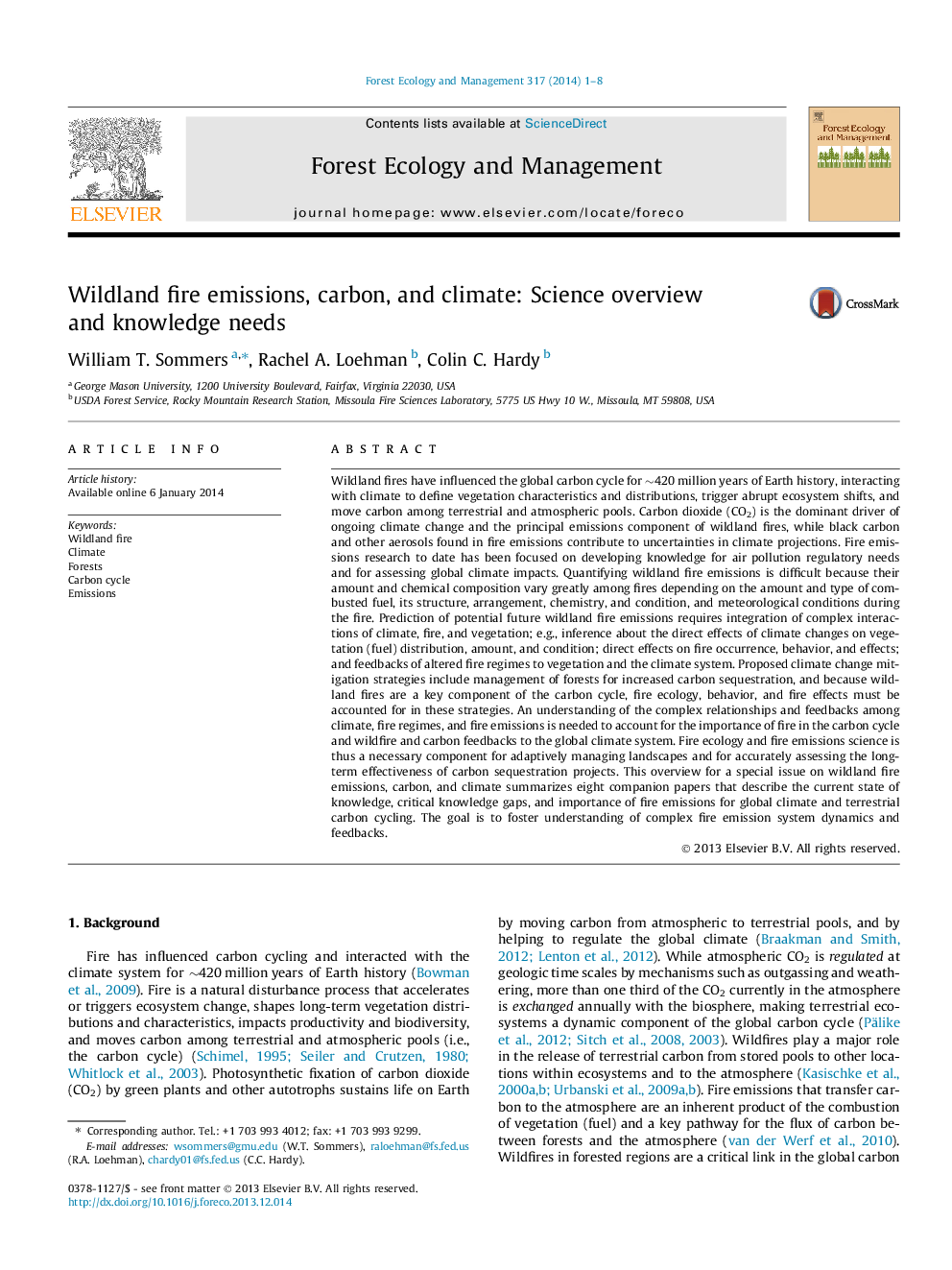| کد مقاله | کد نشریه | سال انتشار | مقاله انگلیسی | نسخه تمام متن |
|---|---|---|---|---|
| 86636 | 159201 | 2014 | 8 صفحه PDF | دانلود رایگان |
• Wildland fires have influenced the global carbon cycle for ∼420 million years.
• Fire moves carbon among terrestrial and atmospheric pools.
• Fires emit carbon dioxide (CO2), black carbon and other aerosols.
• Climate change alters fire regimes, potentially increasing wildfire emissions.
• The global carbon cycle accounting should include wildland fire emissions.
Wildland fires have influenced the global carbon cycle for ∼420 million years of Earth history, interacting with climate to define vegetation characteristics and distributions, trigger abrupt ecosystem shifts, and move carbon among terrestrial and atmospheric pools. Carbon dioxide (CO2) is the dominant driver of ongoing climate change and the principal emissions component of wildland fires, while black carbon and other aerosols found in fire emissions contribute to uncertainties in climate projections. Fire emissions research to date has been focused on developing knowledge for air pollution regulatory needs and for assessing global climate impacts. Quantifying wildland fire emissions is difficult because their amount and chemical composition vary greatly among fires depending on the amount and type of combusted fuel, its structure, arrangement, chemistry, and condition, and meteorological conditions during the fire. Prediction of potential future wildland fire emissions requires integration of complex interactions of climate, fire, and vegetation; e.g., inference about the direct effects of climate changes on vegetation (fuel) distribution, amount, and condition; direct effects on fire occurrence, behavior, and effects; and feedbacks of altered fire regimes to vegetation and the climate system. Proposed climate change mitigation strategies include management of forests for increased carbon sequestration, and because wildland fires are a key component of the carbon cycle, fire ecology, behavior, and fire effects must be accounted for in these strategies. An understanding of the complex relationships and feedbacks among climate, fire regimes, and fire emissions is needed to account for the importance of fire in the carbon cycle and wildfire and carbon feedbacks to the global climate system. Fire ecology and fire emissions science is thus a necessary component for adaptively managing landscapes and for accurately assessing the long-term effectiveness of carbon sequestration projects. This overview for a special issue on wildland fire emissions, carbon, and climate summarizes eight companion papers that describe the current state of knowledge, critical knowledge gaps, and importance of fire emissions for global climate and terrestrial carbon cycling. The goal is to foster understanding of complex fire emission system dynamics and feedbacks.
Journal: Forest Ecology and Management - Volume 317, 1 April 2014, Pages 1–8
